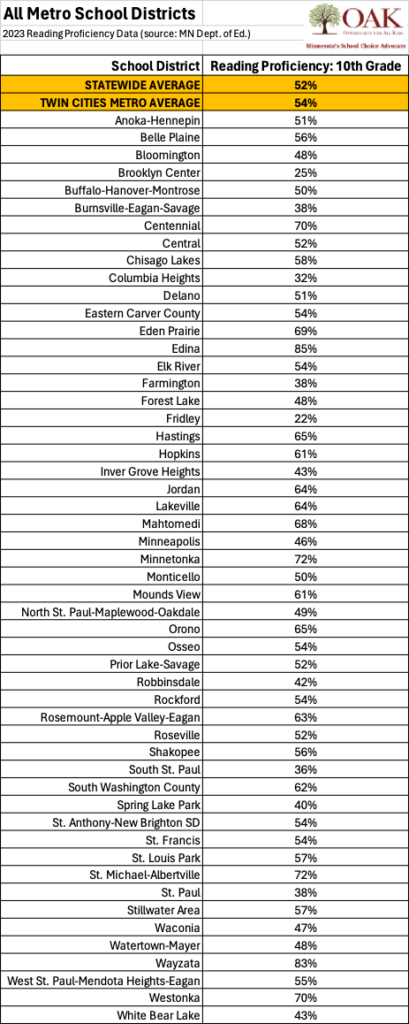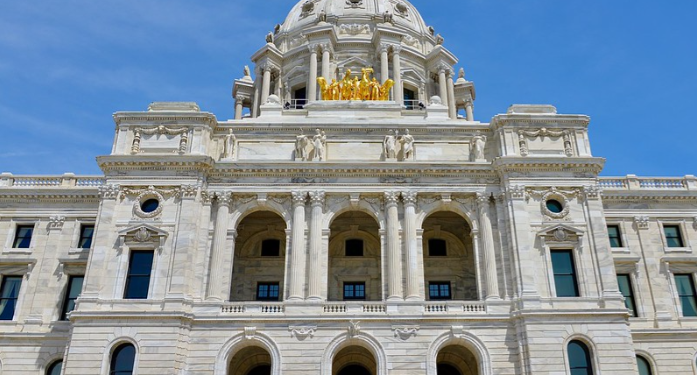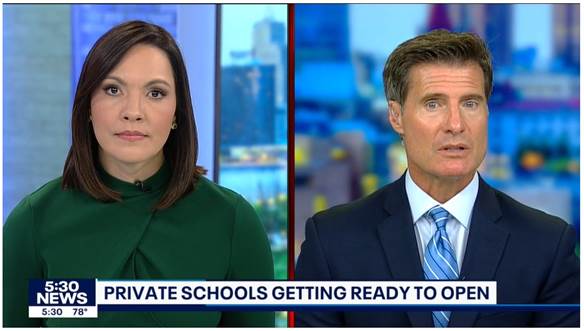Every week, Annie Holmquist and I spend many a day speaking to legislators, aides, and policy wonks both to raise awareness of the current education crisis in Minnesota and promote Education Savings Accounts (ESAs) as an immediate solution while Minnesotans take the time to thoughtfully restore our once-great education system.

It’s reasonable to think that the Minnesota Department of Education would keep legislators abreast of any concerning trends, particularly if those trends portend disaster, be they in just one school district or across the entire state. But that’s not the case.
It would also be reasonable to think our local media would be ringing the alarm bell. But that’s also not happening.
That’s why when we share Minnesota Department of Education data, Minnesotans of all stripes are horrified.
Below are all Twin Cities school districts, sorted alpha, with the corresponding percentage of students who are considered proficient in reading. As you can see, barely half (54%) of high school sophomores in the Metro are proficient in reading.

The good news is that many legislators are working at the Capitol to advance flexibility.
On one track, we know there are efforts to give public school districts greater autonomy and the ability to choose how their resources are used. At the same time, it’s recognized that renewing traditional public education is a long process. As such, in both the Minnesota Senate and House, legislation has been filed to make Education Savings Accounts (ESAs) available to parents who want the freedom, resources, and flexibility to find the right schools for their kids.
That second track to ESAs is absolutely critical for all Minnesota students trapped in failing schools right now. They need options that reflect different pedagogies and approaches to education. A monolithic, top-down, state-run system simply does not work.
In the Minnesota Senate, our enormous thanks goes out to Senators Rarick (sponsor), Coleman, Howe, Johnson, and Drazkowski for making SF 3435 happen!
In the Minnesota House, Representative Kresha filed HF 5123 as the companion legislation, which has already been co-sponsored by Representatives Hudson, Robbins, Knudsen, Anderson, Niska, Scott, Schomacker, Koznick, Kiel, West, Zeleznikar, Schultz, Garofalo, Bakeberg, Nadeau, and Nash, so far.
What these education leaders all recognize is the need for bold action to save the futures of hundreds of thousands of Minnesota students. And they’ve shown the courage to do it.
The momentum for fixing education in Minnesota is growing rapidly. One just needs to look at the chart above to know why.
P.S. Below is the same Twin Cities data as above but sorted by the percentage of high school sophomores who are proficient in reading. This version lets you see how the school districts compare to each other.

—
Image Credit: Flickr-Keith Ewing, CC BY-NC 2.0










![[downloaded during free trial]](https://oakmn.org/wp-content/uploads/2025/11/iStock-1430368205-120x86.jpg)


